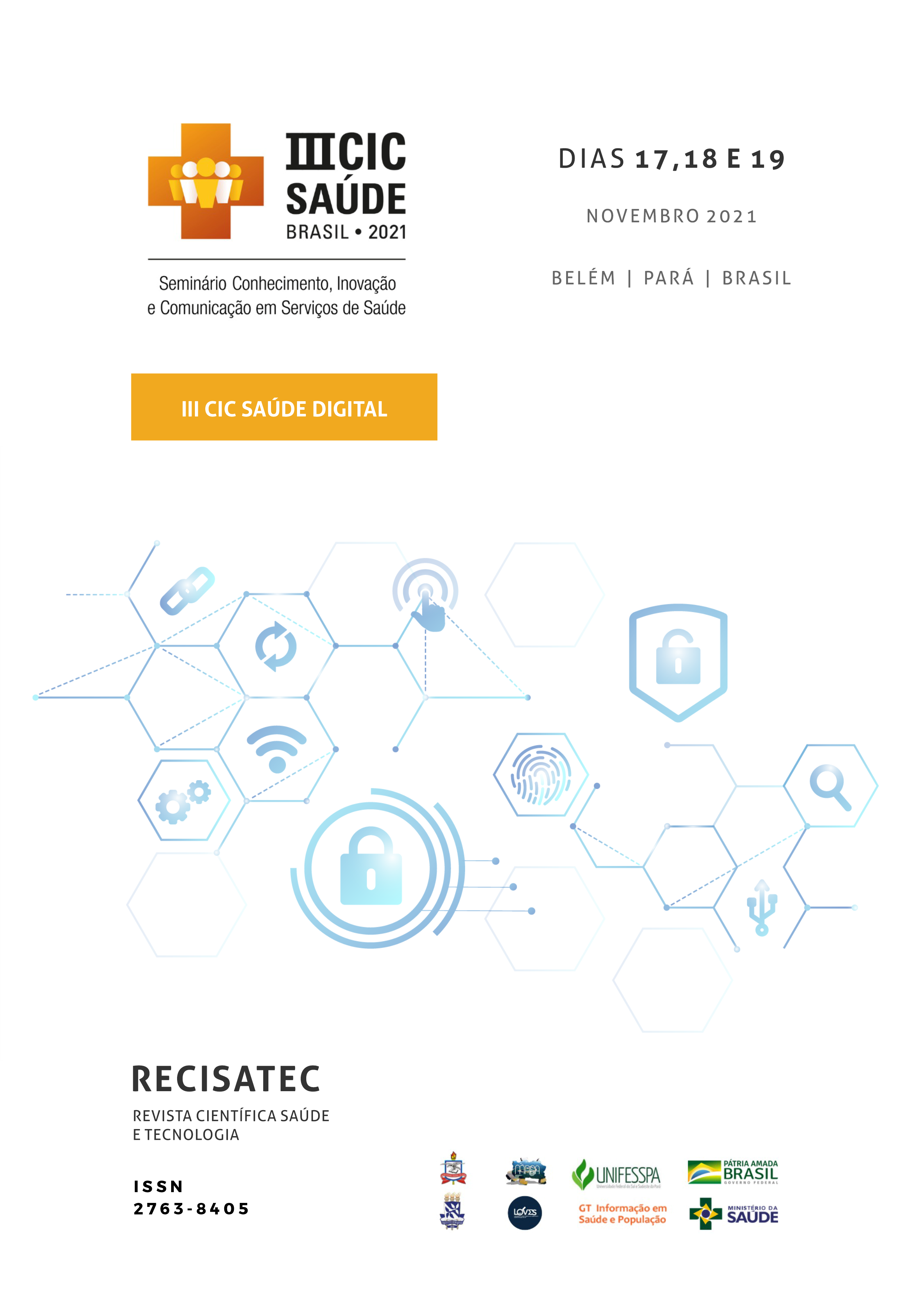VISCERAL LEISHMANIASIS CO-INFECTION AND HUMAN IMMUNODEFICIENCY VIRUS IN BRAZIL: EPIDEMIOLOGICAL DATA COLLECTION
DOI:
https://doi.org/10.53612/recisatec.v2i1.78Keywords:
Coinfection, HIV/AIDS, LeishmaniasisAbstract
Visceral Leishmaniasis (VL) caused by the protozoan of the genus Leishmania infantum chagasi, by female of the subgenus Luztomyia in Brazil. Acquired Immunodeficiency Syndrome (AIDS) is caused by HIV, considered a major public health problem in Brazil. The individual can be carrier of the HIV virus, but not develop the disease, however, the infected individual can transmit the virus at any stage of the infection. The first case of HIV/AIDS and VL co-infection in Brazil was described in 1987, but the first case in the world was in Europe (1985). The objective of this study was to analyze the existence of cases of VL infection and HIV/AIDS and the both co-infection in Brazil, characterizing the region of Brazil most affected by VL and HIV infection. A retrospective study of cases of patients co-infected with VL and HIV from January 2010 to June 2015 in Brazil was carried out, using data recorded in the Notifiable Diseases Information System, Health Surveillance Secretariat and Ministry of Health. The Northeast region had the highest rate of VL infection, and second the region most affected by VL/HIV co-infection. The race most affected by co-infection is the mixed race, and the number of co-infected indigenous people who have low rates of VL and HIV infection calls attention. During the 2010-2015 period, there was an increase in cases of VL/HIV co-infection and a consequent increase in deaths from HIV, even though there was a decrease in the number of AIDS cases in all regions of Brazil.
Downloads
References
-Badaró, R.; Duarte, M. I. S. Leishmaniose visceral (Calazar). In: VERONESI, R.; FOCACCIA, R. Tratado de Infectologia. São Paulo: Editora Ateneu, p. 1234 -1259, 1996.
- Alves, WA. Leishmaniose visceral americana: situação atual no Brasil. Bepa 2009; 6(71): 25-29. Boletim Epidemiológico-HIV. AIDS. D. D. D. a. E. H. V. M. D. Saúde. Brasília-DF; 2013.
-Szwarcwald, CL.; Bastos, FI.; Esteves, MA.; Andrade, CL.; A disseminacao da epidemia.1987.
- Cooper, ER.; Charurat, M.; Mofenson, L.; Hanson, IC.; Pitt, J.; Diaz, C.; et al. Combination antiretroviral strategies for the treatment of pregnant HIV-1 – infected woman and prevention of perinatal HIV-1 transmission. J Acquir Immune Defic Syndr. 2002;29:484-94. DOI: https://doi.org/10.1097/00042560-200204150-00009
- Clavel, F.; Guetard, D.; Brun-Vezinet, F.; Chamaret, S.; Rey, M. A.; Santos-Ferreira, M.O. et al., Isolation of a new human retrovirus from West African patients with AIDS. Science.1986; 233(4761):343-6. DOI: https://doi.org/10.1126/science.2425430
- Desjeux, P. Leishmaniasis: current situation and new perspectives. Comparative Immunology, Microbiology and Infectious Diseases. Oxford, v. 27, n. 5, sept. 2004, p. 305-318. DOI: https://doi.org/10.1016/j.cimid.2004.03.004
- Rabello, A.; Orsini, M.; Disch, J. Leishmania/HIV coinfection in Brazil: an appraisal. Ann Trop Med Parasitol. 2003; 97(Supl. 1):17-28. Privado W. L. Leishmaniose visceral. DOI: https://doi.org/10.1179/000349803225002507
- La Loma, A.; Alvar, J.; Galiano, E.; Blázquez, J.; Muñoz, A.; Nájera, R.; Leishmaniasis or AIDS? Transactions of the Royal Society of Tropical Medicine and Hygiene. 1985; 79(3):421-422. DOI: https://doi.org/10.1016/0035-9203(85)90400-6
-Alvar, J.; Aparicio,P.; Aseffa, A.; Den Boer, M. Cañavate,C.; Dedet, JP.; et al., The relationship between Leishmaniasis and AIDS: the second 10 years. Clin Microbiol Rev. 2008; (21): 334-59. DOI: https://doi.org/10.1128/CMR.00061-07
- MINISTÉRIO DA SAÚDE. Manual de Vigilância e controle da Leishmaniose Visceral, Brasília (2003).
-Alvarenga, DG.; Escalda, PMF.; Costa, ASV.; Monreal, MTFD. Leishmaniose visceral: estudo retrospectivo de fatores associados à letalidade. Rev Soc Bras Med Trop. 2010; 43(2): 194-197, mar –abr. DOI: https://doi.org/10.1590/S0037-86822010000200017
- Olveira, JM. et.al Mortalidade por leishmaniose visceral: aspectos clínicos e laboratoriais. Revista da Sociedade Brasileira de Medicina Tropical 43(2): 188- 193, mar-abr, 2010. DOI: https://doi.org/10.1590/S0037-86822010000200016
- Guerin, P J., et al. Visceral leishmaniasis: current status of control, diagnosis, and treatment, and a proposed research and development agenda. The Lancet Infectious Diseases, v. 2, n. 8, Aug, p. 494-501. 2002. Disponível em: http://www.researchgate.net/publication/11231654_Guerin_P._J._et_al._Visceral_leishmaniasis_current_status_of_control_diagnosis_and_treatment_and_a_proposed_r.58.research_and_development_agenda._Lancet_Inf._Dis._2_494-501. Acesso em: 15 de nov. 2016. DOI: https://doi.org/10.1016/S1473-3099(02)00347-X
- MINISTÉRIO DA SAÚDE. Secretaria de Vigilância em Saúde. Doenças infecciosas e parasitárias: guia de bolso. 8ª ed. Brasília: Ministério da Saúde; 2010. 448 p.
- UNAIDS. Global Report: UNAIDS Report on the Global AIDS Epidemic 2013; Geneva: 148 p.2013.A ONU e a resposta à AIDS no Brasil. Brasília-DF: UNAIDS do Brasil 2013.
- Gomes, SML.; Elkhoury, MANS.; Pelissari, DM.; Lima Junior FEF, Sena, JM.; Cechinel, MP. Coinfecção Leishmania-HIV no Brasil: aspectos epidemiológicos, clínicos e laboratoriais. Epidemiol. Serv. Saúde 2011; 20(4):519-526. DOI: https://doi.org/10.5123/S1679-49742011000400011
Downloads
Published
How to Cite
Issue
Section
Categories
License
Copyright (c) 2022 RECISATEC - SCIENTIFIC JOURNAL HEALTH AND TECHNOLOGY

This work is licensed under a Creative Commons Attribution 4.0 International License.
Os direitos autorais dos artigos/resenhas/TCCs publicados pertecem à revista RECISATEC, e seguem o padrão Creative Commons (CC BY 4.0), permitindo a cópia ou reprodução, desde que cite a fonte e respeite os direitos dos autores e contenham menção aos mesmos nos créditos. Toda e qualquer obra publicada na revista, seu conteúdo é de responsabilidade dos autores, cabendo a RECISATEC apenas ser o veículo de divulgação, seguindo os padrões nacionais e internacionais de publicação.





















































